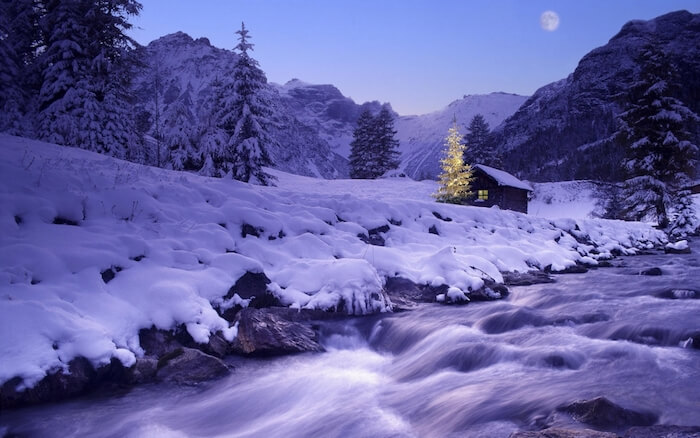As temperatures begin to drop throughout most of the country, it is time to begin thinking about winterizing your home for the cold winter months ahead. Most things that should be on your home winterizing list cost very little or nothing and can save you hundreds or even thousands of dollars in expensive repairs down the road.
One of the most important and easiest things to do to winterize your home is to make sure your rain gutters are clean and free of any debris. Dirt, leaves and other debris can build up in your rain gutters over the course of the year. If this debris is not removed it can cause water to dam in your gutters and then freeze when temperatures drop. This can then lead to large ice dams on your roof that can cause damage as they get heavier.
Another easy energy saving tip for the winter is to make sure your ceiling fans are turning clock wise. This will push the warm air from the top of the room down which can help reduce heating costs.
Your home’s furnace is one of the most important items to prepare as the temperatures begin to drop. The last thing you want during a freezing winter storm is for your furnace to stop running. It is a good idea to have a heating and cooling professional tune up your furnace and make sure it is working correctly before winter sets in. If you arrange for a HVAC professional to look at your furnace in the late summer or early fall you can usually get a discounted rate off the normal cost when these companies are busy during the winter months. Part of the tune up should include a replacement filter. You will also want to generally replace your filter every month or so throughout the winter as well.
One item on the home winterizing list that many of us tend to forget is to undo hoses from outside hose bibs. Removing the hose from the hose bib will help to keep the bib from freezing and breaking. Make sure to check all the hose bibs around your house and inside your garage as well.
The cement around your house is another thing to consider when preparing your home for the cold winter months ahead. One of the worst enemies of cement is water that freezes, melts and seeps into cracks and then freezes again. This process can cause your cement to crack or flake (called spalling). Two easy solutions to help avoid cracking and spalling during winter months are to keep the snow shoveled off your cement and to seal your cement before the snow starts to fly. There are many professional concrete installation companies that will seal your cement. The process is generally not time consuming and not very expensive – especially compared to the cost of repairing or replacing broken concrete.
Following these simple suggestions can save you hundreds or thousands of dollars in expensive repairs. Many of these suggestions and other winterizing techniques are fairly inexpensive or completely free. While they will cost you some time, they are worth it in the long run and will help your home withstand the brutal winter weather.


